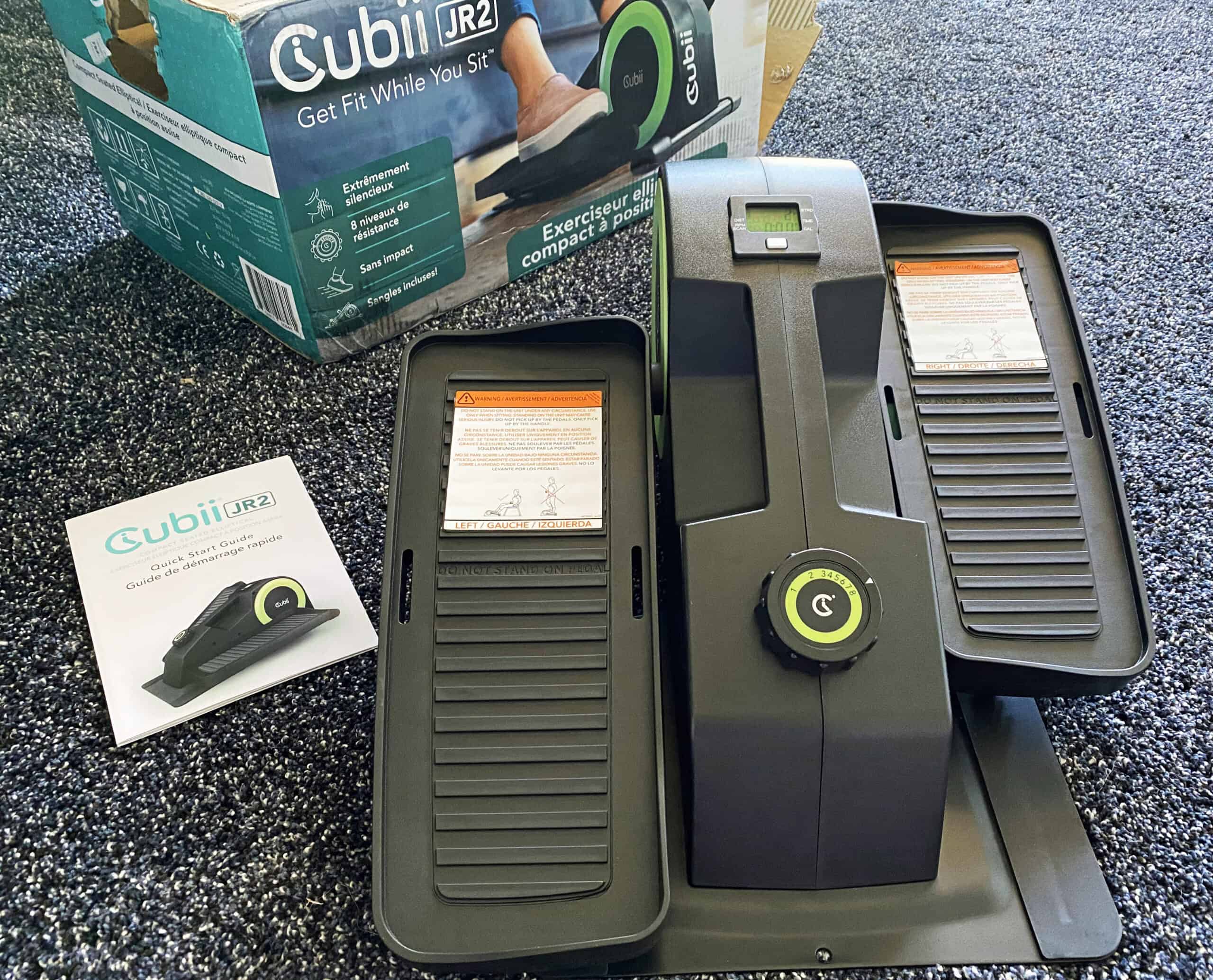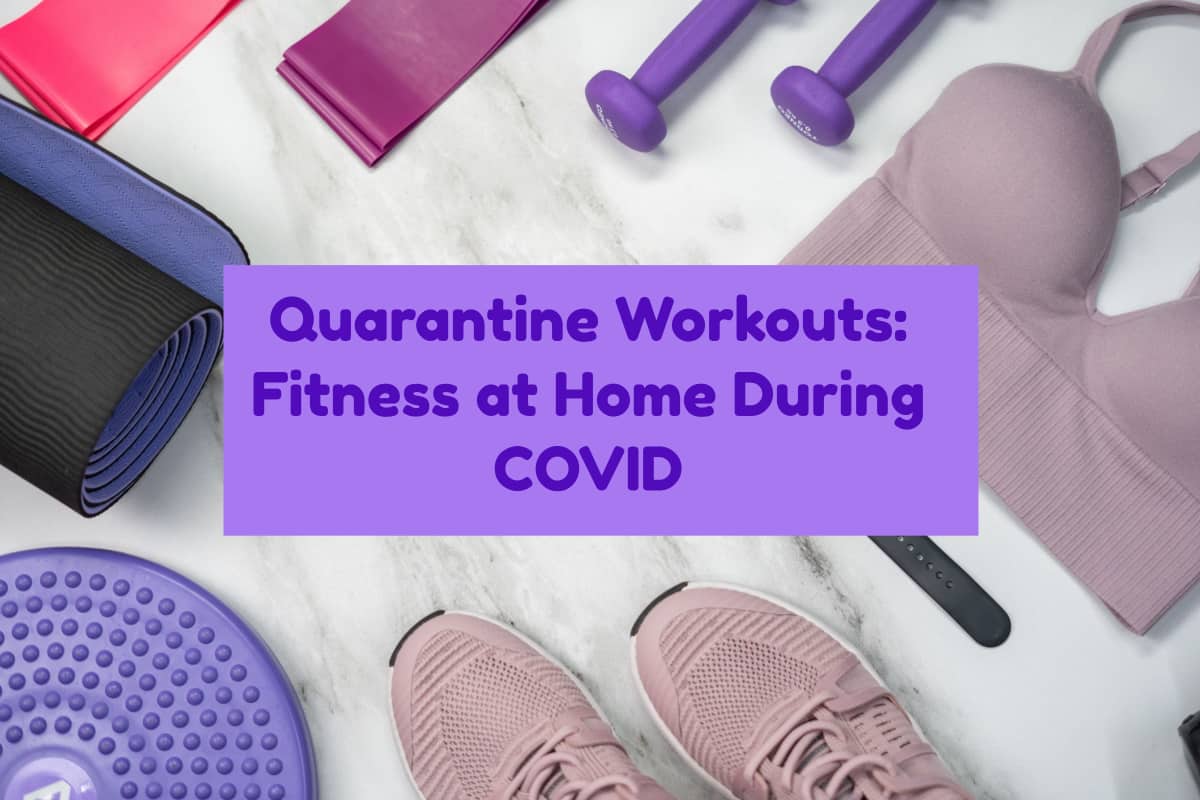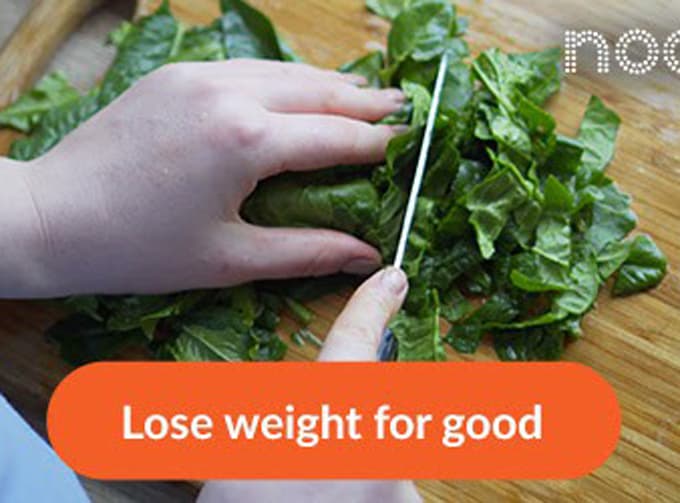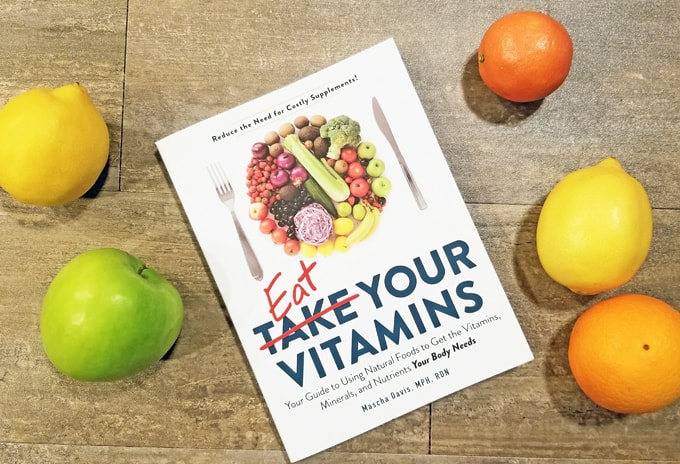I Used Noom and Made Lifestyle Changes to Boost My Metabolism for Weight Loss
Do you ever have one of those moments, where you look at a picture of yourself and cringe? Where it’s your moment, the literal minute where you decide that you have to do something, you have to make a change? Mine was mid-June of this year, on a day I was tired and cranky, and seeing myself in a photo from Father’s Day pushed me over the edge. That was the day I decided to figure out how to boost my metabolism and choose to make lifestyle changes to work on weight loss. There was just no other way around it.
I mean, there was a way around it. I could have done nothing, but I knew that there would just be another day and another photo, and I was done with that.
When I was in my 20s and 30s…and maybe even my 40s…losing weight wasn’t fun, but all I had to do was up my activity, cut back on snacks and I’d start see the numbers on the scale lower pretty quickly. Post-menopause though? Not nearly the same. Hormones really do impact the way your body works, and metabolisms can come to a screeching halt.
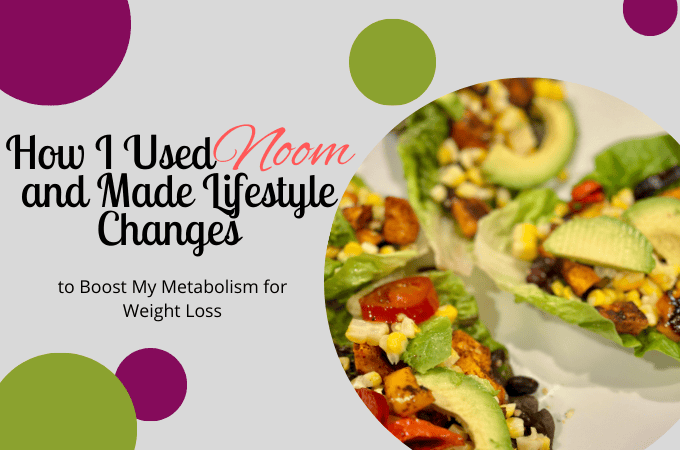
FYI, I’m no doctor. I’m not even a nurse anymore. I’m just a woman that’s had four kids, had a hysterectomy in my 30s, and was done with menopause before I even knew it had happened. I had to spend a lot of time researching weight loss and why it wasn’t happening with my old methods.
One of the first things I read about was cortisol, and it started popping up in articles all over. There are apparently tests you can have run, via your doctor or ordering online, but for me, the symptoms and signs of having high cortisol levels made complete sense. They fit. Whether or not I was right, I’ll never know, but taking steps to lower cortisol and focus on weight loss via a calorie deficit has resulted in my current 22 pound weight loss. I say current because I’m hoping to drop another four pounds…and who knows, maybe even a few more if I feel like it.
Why? Because I feel SO much better. My knees appreciate the less stress on them as I go up the stairs. I sleep more comfortably. My waist bands don’t pinch and I don’t have marks in my shoulders when I take off my bra. I have more energy, I no longer have thigh chafe in the nasty Southern California never ending summer temps, and I learned that I actually have collar bones!
Then there’s the confidence. I have always been bothered by my saggy jowls. They run in the family but that doesn’t mean I’m going to quietly acquiesce to having them. With the weight loss — and some other things I’ll share below — they are much less obvious than they used to be. I smile in photos and am no longer freaking out that I may have not tilted my head properly to minimize how much they’re seen. Now, if I could just get over the slouchy posture I adopted the last few years after trying to sink and somehow look smaller.
Hint: Slouching doesn’t really work.
How I Used Noom and Made Lifestyle Changes to Boost My Metabolism for Weight Loss
There are small lifestyle changes you can make that add up. A little here, a little there, and those things make a difference. Weight loss is not all or nothing. Success is different for everyone. Timelines won’t be the same, so what I did won’t work for everyone, but I’m going to share here what I did…and am going to continue to do for at least the foreseeable future.
Tracking calories: I used to think rice was okay, until I had to enter it into my calorie tracking module. Now I know to stop at 1/2-1 cup max. I’ve been amazed to learn that some foods I thought were good for my calorie budget, simply because they had no added sugar. One tablespoon of something like olive oil can surprise you! This is so you have a calorie deficit from your normal maintenance calorie load.
For example, if 2100 calories is your ‘normal’ calorie budget, where you stay at your current weight, you’ll need to drop that at least 500 calories if you want to lose a pound per week. It can be tricky though, because while the math sounds great if you cut your calories too much, your body will start holding onto your fat in order to protect itself, so don’t be extreme. It also is not healthy — so speak to your doctor if you don’t have another reliable, credible source of trustworthy info on how many calories is best for you. (Going too low can be very detrimental for your health.)

Stocking my refrigerator with the right foods: you can’t eat cookies you don’t have, and keeping fruit on hand makes it a no-brainer for snacks instead of processed sugar.
Intentional movement: instead of doing a workout or exercises daily, I practice intentional movement. Several days a week, this is lifting weights. (Muscle burns more calories than fat, so your body becomes more efficient.) I do yoga or pilates. Sometimes, it’s a ride on my Bowflex stationery bike. For me, it doesn’t need to be cardio. So many times, we get caught up in the “you gotta burn those calories off, do that cardio!” hype, but it’s not always the case. It’s increased movement. That’s why I call it intentional movement instead of a workout.
How much movement though? More activity than you got before you started making the changes! For me, this was tracking my steps on a regular basis and then adding a few thousand to it. Some people will tell you an outrageous number, like “To lose weight, you have to get at least 15,000 steps per day!” Don’t listen to that. Listen to your body. Look at your personal results. For me, I was getting around 4500 steps per day around my house as a work-at-home mom. Now, my goal is around 8500 per day. That’s almost twice what I was getting!
Proper supplements: again, I am not a doctor and this is not medical advice. It’s simply what I did that jumpstarted my metabolism and contributed to me feeling better overall. I am not a great sleeper, often waking up around 1am-2am daily. Magnesium glycinate to the rescue! It’s also being looked at as a metabolism booster. I also take Vitamin C, DHEA, fish oil and B6.
I also made some basic changes in my diet, like:
- Switched to black coffee — I saved 70 calories from creamer, and I cut out chemical-laden products with added sugar.
- Fruit and vegetables with every single meal — even if it means adding a tablespoon of pure fruit, no added sugar preserves.
- Changing out the carbs and starches — there’s no reason you can’t eat two vegetables at a meal instead of a starch or carb! I cut back on rice and potatoes and replace them most nights with a second veggie or a salad.
- Protein almost every single meal — hard-boiled eggs, Greek yogurt, chicken or fish are the easiest.
- Increased water — there’s a fine line, because too much has me pottying all night, and not enough causes headaches. Find your sweet spot, but don’t go overboard. (Too much water can be very bad for you.)
- Pay attention to labels — see where sugar is listed on your juice labels, and maybe cut it out of your diet entirely unless it’s no sugar added. Watch your salt intake, as it can cause water retention.
Buy a quality scale, and if possible, look at a smart scale — my son bought me a Withings Smart Scale for my birthday and I LOVE it. It’s accurate, fast, and it gives me a lot of added information, like my BMI, my percentage of body fat, muscle, and visceral fat. It even tells me if I’m dehydrated, and the app syncs with my Apple Watch and my Apple Health app. Is it required? No, but I really feel I’m able to see the differences in what I’m doing in a more tangible way, and that’s incredibly motivating.
Consider a program like Noom — but disclaimer, I was an affiliate for Noom in the past, though I do not get anything from Noom for sharing it with you at the time I’m writing this post. Noom does have a per-month fee (I think it’s $70 right now?) and personally, I think it’s worth it. The app does calorie tracking (even letting you scan photos or bars to help make it more easy), has very insightful daily lessons that dive deep into the psychology of weight loss and working through the daily struggles, personal coaches, a supportive community, a weight loss progress chart, and so much more. I really credit Noom with making my weight loss program a success.
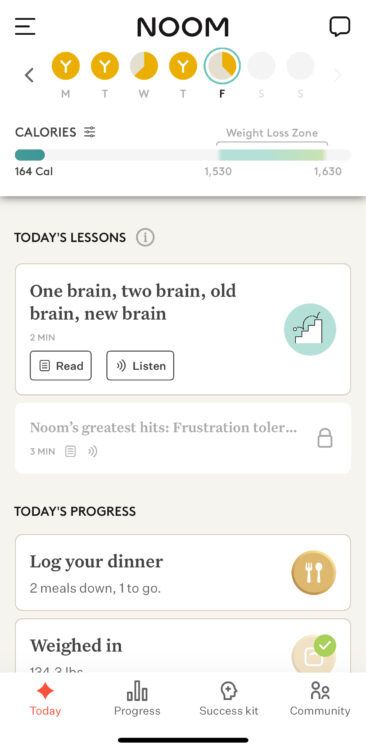
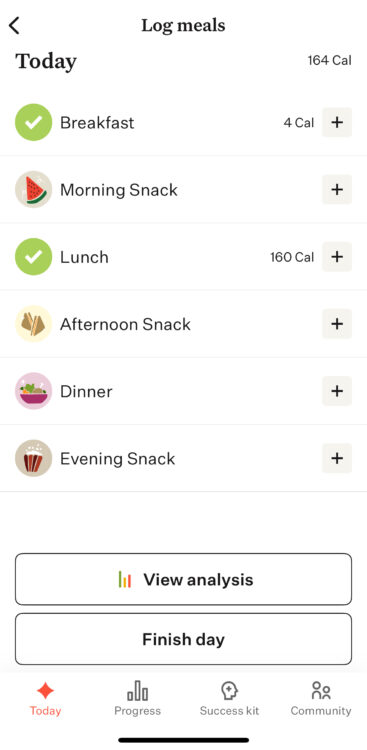

It’s important to note that Noom is not a program that limits what you eat. Throughout this process, I’ve enjoyed wine, cocktails, a few BBQs with dessert, and a couple of getaways. I still lost weight, not because I said no to the fun things, but because I made good choices. I chose to save my calories for the fun stuff. There are no bad foods. I indulge and have never felt deprived. To me, that’s critical in sticking with ANY program.
A smart watch isn’t a requirement, of course, but I don’t carry my phone everywhere I go around the house, and it helps hold me accountable for enough activity. It’s a timer for my workouts, helps me track calories burned, and while I laugh about it all the time, it reminds me hourly to stand up — which seems so basic, but it’s too easy to get caught up in work, or even a good book, and not move enough. Staying active in some way has been key for me.
In the end, my lifestyle changes to boost my metabolism come down to just a couple of things: increased activity and a daily calorie deficit. It sounds so simplistic, when it really isn’t, because the science behind it isn’t that cut and dried. Age, gender, health, etc. all contribute to how easily, or how hard, it is for someone to lose weight.

It’s easy to get discouraged when things don’t work, and weight loss plateaus are common. That doesn’t mean what you’re doing isn’t working; it’s typical for your body to hold fast to where it is, and apparently it can happen for weeks. Also, muscle gain can increase the scale, when in reality, you are losing fat. Measuring yourself can be a great way to see where your body is changing, but if you’re like me and forget to do that, you’ll see differences in your clothes.
Now, when I look at recent pictures of myself, I can see the difference. In my head, I’m still that same person with broad shoulders and rolls around my tummy, but I’m working on that. I’ve dropped a size in clothes, and I am slowly shopping to replace things. (Trying on a smaller size of jeans was a huge thing for me. I didn’t want to do it, I was terrified I wouldn’t fit into the next size down despite my current size being baggy, and I was so afraid I’d be discouraged.) I refuse to keep all those ‘fat clothes,’ so I’ll be making a big donation soon…but the work involved in cleaning out my closet, that’s a big project so I’m doing a little at a time.
Boosting my metabolism took some time to figure out, but I’m motivated now to stick with what works for me. I’m not sure how much more weight I’ll lose — and if I can keep it off without still cutting back — but I feel better than I did four months ago, and I’m thrilled I finally did the thing I’ve been saying I wanted to for years.
Stay tuned for more blog posts relevant to healthier lifestyle choices! I’ve got one coming very soon on hydration — not just the importance of it, but options to stay hydrated that aren’t just plain water. Drinking enough water has always been a downfall but this post should help anyone trying to increase their water intake, so visit again soon!

